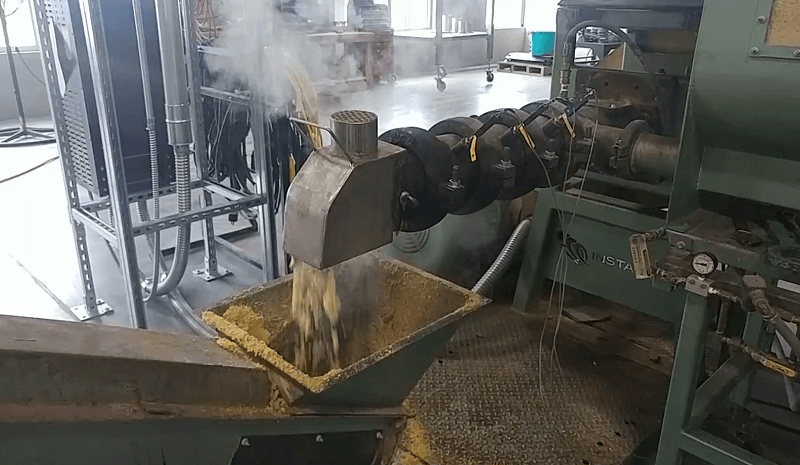Principles of steam exhausting

A topic of importance for plant cleanliness is exhausting the steam released during the extrusion process. As material is processed within the extruder, the sudden drop to atmospheric pressure causes internal moisture of the material to be released. This can be seen by the large plume of white vapor released during the process. It is important to deal with this vapor as it does contain small particulates of oil. Over time, this can collect on walls and various surfaces and causes aesthetic and cleanliness issues. When dealing with the steam, there are some basic principles to keep in mind when designing a system.
Capture the vapor
The better you can entrap the vapor, the better you can handle it. This could be a simple hood or a large shroud and will depend on the work area and environment. The capture point should be as close to the source as possible. The further away from the source, the less effective the capturing method will be. In terms of airflow, the amount of air required to capture the vapor will increase with the square of the distance. This means that if your distance to the source doubles, you will need 4x the amount of airflow to capture the vapor. It is a balance as your hood should not interfere with workflow, so this must be considered with hood/shroud design and placement.
Accelerate the vapor
Once the vapor is captured, it needs to be moved away from the source. The volume of air will determine ducting sizes. In a duct, the volume of air divided by the cross-sectional area of the duct will determine flow rate. For vapors containing particulate matter, a range of 3500-4500 feet per minute is recommended. This is done so that the particles carried within the duct are suspended and carried through the duct with enough velocity so they do not stick and stay on the inside surface. Lower velocities will cause material to collect on the inside surfaces, eventually causing condensation and cleanliness issues.
Exhaust the vapor
Once the steam is captured and removed, it can be exhausted at a desired location. Typically, this is out of the side of the building. This can usually suffice, but any environmental regulations should be considered here and that may dictate if you need to further handle the vapor. Coalescing filters can be used to help separate oil from water and can be used here. For a very clean exhaust, a wet collector can be used to combine the vapor with a small mist of water. This captures any particulates which are then discharged into a sewer or effluent water stream.
Designing the system
This is only a small sampling of the things to note when designing a steam exhaust system. There is a lot to consider for how to capture and handle steam and it can involve a lot of calculations to truly optimize the design. Understanding the principles is a good first step to designing an effective system.
Contact our engineering team with any questions related to steam exhausting or designing a system that works best for your facility.


